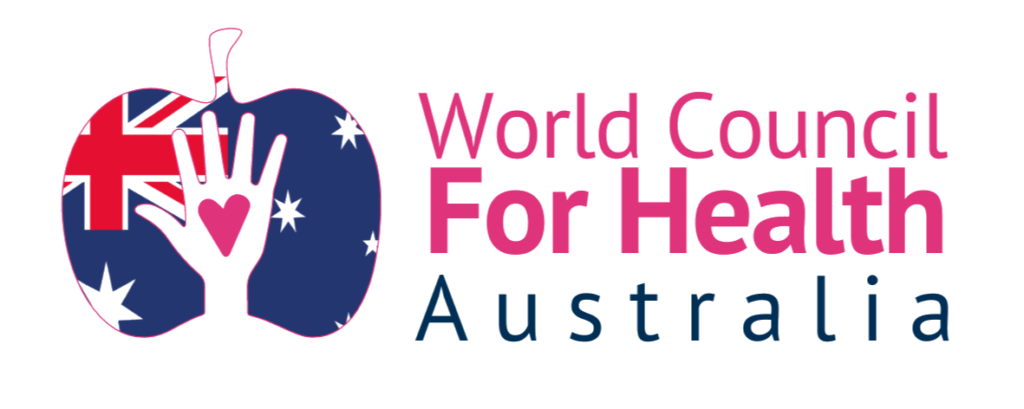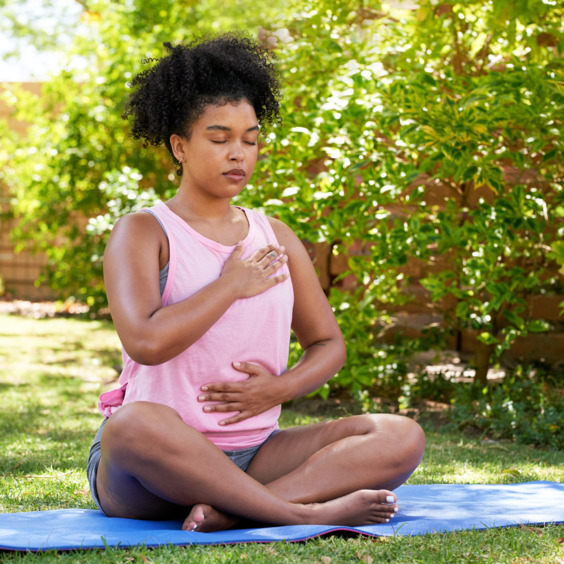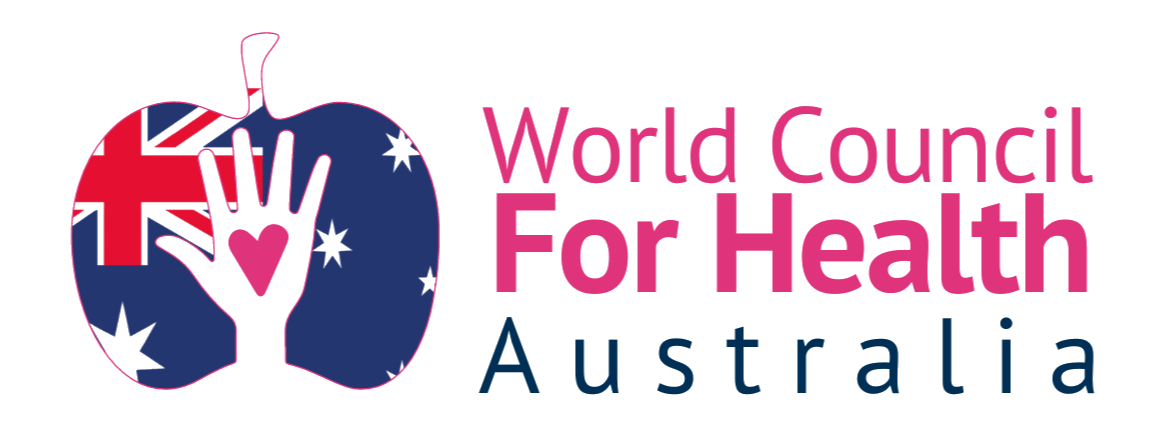Introduction
Why Breathing?
To maintain the body and mind in optimal health, the systems of circulation, digestion, endocrine, lymphatic, immune activities, tissue regeneration, elimination, and detoxification are all important. Each of these systems are directly impacted by the autonomic nervous system (ANS). The ANS controls the unconscious “automatic” processes of the body, the ones we do not have to think about consciously to control, such as our heart rate, blood pressure, breathing rate, body temperature, digestion, sweating and pupil dilation. The ANS consists of two branches – the Sympathetic Nervous System (SNS) and the Parasympathetic Nervous System (PNS).
In general, stimulation of the Sympathetic Nervous System (SNS) brings the body into a state of raised activity and alertness, known as the “fight, flight, freeze” response. The body’s systems are naturally designed to be in this state for short bursts only in order for us to meet a threat or challenge. Continual or chronic activation of the Sympathetic Nervous System (for example through chronic stress) is linked to the exacerbation of existing physical and mental health conditions, as well as inducing new health problems and diseases [1, 2]. In this lifted state where the SNS is activated, the body’s systems are not resting or repairing.
In contrast, the Parasympathetic Nervous System (PNS), known as “rest, digest, relate” returns the body’s functions towards homeostasis and is a counterbalance to the Sympathetic Nervous System (SNS). When the PNS is active the body’s systems are resting and repairing. Healing and health maintenance processes are turned on when the body is in the parasympathetic state, and as such, the more time we spend in the PNS state the healthier we are.
In order to recover from disease, ward off illness and optimise overall health and wellbeing we must cultivate parasympathetic dominance as our default state. So how do we achieve this? Many practices have shown positive outcomes in supporting the PNS state including Yoga Therapy, Mindfulness, Meditation and Breathing Practices. However out of all of these, it is the breath which is the most readily accessible for the majority of people. Furthermore, the breath is also the direct link into the Autonomic Nervous System.
Below is a Breathing Protocol which employs: Nasal Breathing, Diaphragmatic Breathing, and Slow Breathing combined with Elongation of the Exhale which, when combined, elicits parasympathetic dominance in the system and therefore provides the foundational conditions the body needs to be well.
Benefits?
Nasal Breathing
- Filters the air – reduces exposure to foreign substances
- Sinuses release nitric oxide (NO), increasing circulation and delivery of oxygen into cells [3]
- Opens blood vessels in the lungs allowing better oxygen diffusion
- Balances blood gases – maintaining balanced pH and enhancing access to oxygen in the blood [4]
- Additional nasal cavity resistance results in 10 to 20% better oxygenation [5]
Diaphragmatic Breathing
- Decreases stress as measured by physiologic biomarkers [6]
- Increases lung capacity
- Improves blood oxygen levels
- Enhances vagal activity – stimulates and “tones” the Vagus Nerve (the main nerve of the PNS) [7]
- Increases Heart Rate Variability (HRV)-a marker of healthy vagal tone & nervous system resilience [8]
Slow Breathing
The typical respiratory rate in humans is within the range of 10–20 breaths per min (0.16–0.33 Hz)[9]. Slow breathing is defined as any rate from 4 to 10 breaths per min (0.07–0.16 Hz) and is the optimal breathing rate for increased RSA/HRV [10, 11, 12].
Slow breath correlates with physiological markers of good health including:
- Increases tidal volume [13], chemoreflex and baroreflex sensitivity, respiratory sinus arrhythmia (RSA), enhanced ventilation efficiency and blood oxygenation [14, 15, 16], cardiorespiratory coupling and increased Vagal Activity (Vagal Tone) [17, 18]
- Suppresses Sympathetic Nervous System (SNS) activity [19, 20]
- Promotes Parasympathetic (PNS) dominance [21, 22, 23]
- Maximises HRV and autonomic function – associated with decreased mortality in pathological states
and longevity in the general population [24, 25-33]
Elongation of the Exhale
Heart rate increases during inspiration (inhale breath) (SNS dominance) and decreases during expiration (exhale breath) (PNS dominance) [34]. Therefore when we intentionally elongate the exhale we tip the nervous system toward parasympathetic dominance [35], stimulating vagal activity, the relaxation response, and the conditions to renew, repair, and heal. [36, 37].
Practices
1. Preparation
- Find a comfortable seated position or lay down on the floor or a bed.
- If sitting, have an upright spine and soften the shoulders away from the ears.
- Place the tip of the tongue behind the front teeth (where teeth & gum meet) to help relax the jaw.
- Decide if you would like to have the eyes closed or alternatively a gentle gaze.
2. Awareness
- Bring your awareness to the natural breath – notice the qualities of the natural breath without
altering the breath in any way- do this for 30 seconds to 1 minute.
3. Nostril Breathing
- Breathe in and out through the nose (have the lips softly closed so as to prevent breathing through the mouth). Only breath through the mouth if the nasal passage is blocked e.g. if you have a cold.
4. Diaphragmatic Breathing
- Guide the inhale breath down to the base of the lungs so that the upper abdomen (belly) gently rises on the inhale and gently lowers and returns back to neutral on the exhale. (To assist with this you may like to place one hand on the chest and one hand on the upper abdomen above the naval to determine where you’re breathing. The bottom hand which is on the belly rises on the inhale and lowers on the exhale; while the upper hand on the chest moves very little).
5. Slow Breathing and Elongated Exhale
- Once comfortable with the above steps, begin to elongate the exhale breath so that it is twice the length of the inhale. Count the ratios in your mind – For example you may use a 3:6 ratio (inhaling) for a count of 3 and exhaling for a count of 6. Note this ratio creates a breath rate close to 6 breaths per minute which optimises HRV. However if this ratio feels too long start with a 2:4 ratio or even 1:2 to begin with and build up to longer ratios over days or weeks of practice. If the ratio feels to short you may use a 4:8 or even 5:10. Make sure the breath ratio you choose is comfortable for you.
6. Length of Practice
- You may start with as little as 3 to 5 minutes and build up to a longer practice over time. Great benefits are shown when these techniques are practiced for 20 to 30 minutes at a time, 2 to 3 times per day and include improvements in overall physiological health along with psychological wellbeing including increased comfort, relaxation, vigor and alertness, improved sleep, and mood and reduced symptoms of arousal, anger, anxiety and depression. [38]1
Michelle Bradshaw (BDevStud, Dip YT (RYT500) (IAYT)) Yoga Therapist; Breathing Consultant; Trauma-Informed Somatic Therapist and Integrative Coach for Mental Health
References
- Sleight P, La Rovere MT, Mortara A, et al. Physiology and pathophysiology of heart rate and blood pressure variability in humans: is power spectral analysis largely an index of baroreflex gain Clin Sci 1995; 88: 103–109. [PubMed] [Google Scholar]
- Coote JH, Chauhan RA. The sympathetic innervation of the heart: Important new insights. Auton Neurosci 2016; 199: 17–23. [PubMed] [Google Scholar]
- Lundberg JO, Weitzberg E. Nasal nitric oxide in man. Thorax. 1999 Oct;54(10):947-52. doi: 10.1136/thx.54.10.947. PMID: 10491460; PMCID: PMC1745376.
- Recinto C, Efthemeou T, Boffelli PT, Navalta JW. Effects of Nasal or Oral Breathing on Anaerobic Power Output and Metabolic Responses. Int J Exerc Sci. 2017 Jul 1;10(4):506-514. PMID: 28674596; PMCID: PMC5466403.
- Cottle, M.H., 1987. The work, ways, positions and patterns of nasal breathing (relevance in heart and lung illness). Reprinted in: Barelli, P., Loch, W.E.E., Kern, E.R., Steiner, A. (Eds.), Rhinology. The collected writings of Maurice H. Cottle, MD. American Rhinologic Society, Kansas City, Missouri.
- Hopper SI, Murray SL, Ferrara LR, Singleton JK. Effectiveness of diaphragmatic breathing for reducing physiological and psychological stress in adults: a quantitative systematic review. JBI Database System Rev Implement Rep. 2019 Sep;17(9):1855-1876. doi: 10.11124/JBISRIR-2017-003848. PMID: 31436595.
- Hamasaki H. Effects of Diaphragmatic Breathing on Health: A Narrative Review. Medicines (Basel). 2020 Oct 15;7(10):65. doi: 10.3390/medicines7100065. PMID: 33076360; PMCID: PMC7602530.
- Kim HG, Cheon EJ, Bai DS, Lee YH, Koo BH. Stress and Heart Rate Variability: A Meta-Analysis and Review of the Literature. Psychiatry Investig. 2018 Mar;15(3):235-245. doi: 10.30773/pi.2017.08.17. Epub 2018 Feb 28. PMID: 29486547; PMCID: PMC5900369.
- Russo MA, Santarelli DM, O’Rourke D. The physiological effects of slow breathing in the healthy human. Breathe (Sheff). 2017 Dec;13(4):298-309. doi: 10.1183/20734735.009817. PMID: 29209423; PMCID: PMC5709795.
- Brown TE, Beightol LA, Koh J, et al. The important influence of respiration on human R-R interval power spectra is largely ignored. J Appl Physiol 1993; 75: 2310–2317. [PubMed] [Google Scholar]
- Hirsch JA, Bishop B. Respiratory sinus arrhythmia in humans: how breathing pattern modulates heart rate. Am J Physiol 1981; 241: H620–H629. [PubMed] [Google Scholar]
- Ben-Tal A, Shamailov SS, Paton JF. Central regulation of heart rate and the appearance of respiratory sinus arrhythmia: new insights from mathematical modeling. Math Biosci 2014; 255: 71–82. [PMC free article] [PubMed] [Google Scholar].
- Vostatek P, Novak D, Rychnovsky T, et al. Diaphragm postural function analysis using magnetic resonance imaging. PloS One 2013; 8: e56724. [PMC free article] [PubMed] [Google Scholar]
- Bilo G, Revera M, Bussotti M, et al. Effects of slow deep breathing at high altitude on oxygen saturation, pulmonary and systemic hemodynamics. PloS one 2012; 7: e49074. [PMC free article]
[PubMed] [Google Scholar] - Bernardi L, Spadacini G, Bellwon J, et al. Effect of breathing rate on oxygen saturation and exercise performance in chronic heart failure. Lancet 1998; 351: 1308–1311. [PubMed] [Google Scholar]
- Ovadia-Blechman Z, Gavish B, Levy-Aharoni D, et al. The coupling between peripheral microcirculation and slow breathing. Med Eng Phys 2017; 39: 49–56. [PubMed] [Google Scholar]
- Chang Q, Liu R, Shen Z. Effects of slow breathing rate on blood pressure and heart rate variabilities. Int J Cardiol 2013; 169: e6–e8. [PubMed] [Google Scholar]
- Zhang PZ, Tapp WN, Reisman SS, et al. Respiration response curve analysis of heart rate variability. IEEE Trans Biomed Eng 1997; 44: 321–325. [PubMed] [Google Scholar]
- Bernardi L, Spadacini G, Bellwon J, et al. Effect of breathing rate on oxygen saturation and exercise performance in chronic heart failure. Lancet 1998;351:1308-11. [PubMed] [Google Scholar]
- Goso Y, Asanoi H, Ishise H, et al. Respiratory modulation of muscle sympathetic nerve activity in patients with chronic heart failure. Circulation 2001;104:418-23. [PubMed] [Google Scholar]
- Pal GK, Velkumary S, Madanmohan. Effect of short-term practice of breathing exercises on autonomic functions in normal human volunteers. Indian J Med Res 2004; 120: 115–121. [PubMed] [Google Scholar]
- Brown R. P., Gerbarg P. L., Muench F. (2013). Breathing practices for the treatment of psychiatric and stress-related medical conditions. Psychiatr. Clin. North Am. 36, 121–140. 10.1016/j.psc.2013.01.001 [PubMed] [CrossRef] [Google Scholar]
- Streeter C. C., Gerbarg P. L., Saper R. B., Ciraulo D. A., Brown R. P. (2012). Effects of Yoga on the autonomic nervous system, gamma-aminobutyric acid, and allostasis in epilepsy, depression, and posttraumatic stress disorder. Med. Hypotheses 78, 571–579. 10.1016/j.mehy.2012.01.021 [PubMed}[CrossRef] [Google Scholar]
- Radaelli A, Raco R, Perfetti P, et al. Effects of slow, controlled breathing on baroreceptor control of heart rate and blood pressure in healthy men. J Hypertens 2004; 22: 1361–1370. [PubMed] [Google Scholar]
- Tsuji H, Larson MG, Venditti FJ Jr, et al. Impact of reduced heart rate variability on risk for cardiac events. The Framingham Heart Study. Circulation 1996; 94: 2850–2855. [PubMed] [Google Scholar]
- Nolan J, Batin PD, Andrews R, et al. Prospective study of heart rate variability and mortality in chronic heart failure: results of the United Kingdom heart failure evaluation and assessment of risk trial (UKheart). Circulation 1998; 98: 1510–1516. [PubMed] [Google Scholar]
- La Rovere MT, Pinna GD, Hohnloser SH, et al. Baroreflex sensitivity and heart rate variability in the identification of patients at risk for life-threatening arrhythmias: implications for clinical trials. Circulation 2001; 103: 2072–2077. [PubMed] [Google Scholar]
- Aeschbacher S, Schoen T, Dorig L, et al. Heart rate, heart rate variability and inflammatory biomarkers among young and healthy adults. Ann Med 2016: 1–26. [PubMed] [Google Scholar]
- Aeschbacher S, Bossard M, Ruperti Repilado FJ, et al. Healthy lifestyle and heart rate variability in young adults. Eur J Prev Cardiol 2016; 23: 1037–1044. [PubMed] [Google Scholar]
- Buccelletti E, Gilardi E, Scaini E, et al. Heart rate variability and myocardial infarction: systematic literature review and metanalysis. Eur Rev Med Pharmacol Sci 2009; 13: 299–307. [PubMed] [Google Scholar]
- Zulfiqar U, Jurivich DA, Gao W, et al. Relation of high heart rate variability to healthy longevity. Am J Cardiol 2010; 105: 1181–1185. [PubMed] [Google Scholar] 32 Kemp AH, Quintana DS. The relationship between mental and physical health: insights from the study of heart rate variability. Int J Psychophysiol 2013; 89: 288–296. [PubMed] [Google Scholar]
- Thayer JF, Lane RD. The role of vagal function in the risk for cardiovascular disease and mortality. Biol Psychol 2007; 74: 224–242. [PubMed] [Google Scholar]
- Kemp AH, Quintana DS. The relationship between mental and physical health: insights from the study of heart rate variability. Int J Psychophysiol 2013; 89: 288–296. [PubMed] [Google Scholar]
- Billman G.E. Heart rate variability—A historical perspective. Front. Physiol. 2011;2:86. doi: 10.3389/fphys.2011.00086. [PMC free article] [PubMed] [CrossRef] [Google Scholar]
- Komori T. The relaxation effect of prolonged expiratory breathing. Ment Illn. 2018 May 16;10(1):7669. doi: 10.4081/mi.2018.7669. PMID: 30046408; PMCID: PMC6037091.
- Bae D, Matthews JJL, Chen JJ, Mah L. Increased exhalation to inhalation ratio during breathing enhances high-frequency heart rate variability in healthy adults. Psychophysiology. 2021;58(11), e13905. 10.1111/psyp.13905. [PubMed] [CrossRef] [Google Scholar] [Ref list]
- Van Diest I, Verstappen K, Aubert AE, Widjaja D, Vansteenwegen D, Vlemincx E.Inhalation/exhalation ratio modulates the effect of slow breathing on heart rate variability and relaxation. Appl Psychophysiol Biofeedback. 2014;39(3):171–180. 10.1007/s10484-014-9253-x. [PubMed] [CrossRef] [Google Scholar] [Ref list]
- Zaccaro A, Piarulli A, Laurino M, Garbella E, Menicucci D, Neri B, Gemignani A. How Breath-Control Can Change Your Life: A Systematic Review on Psycho-Physiological Correlates of Slow Breathing. Front Hum Neurosci. 2018 Sep 7;12:353. doi: 10.3389/fnhum.2018.00353. PMID: 30245619; PMCID: PMC6137615.



